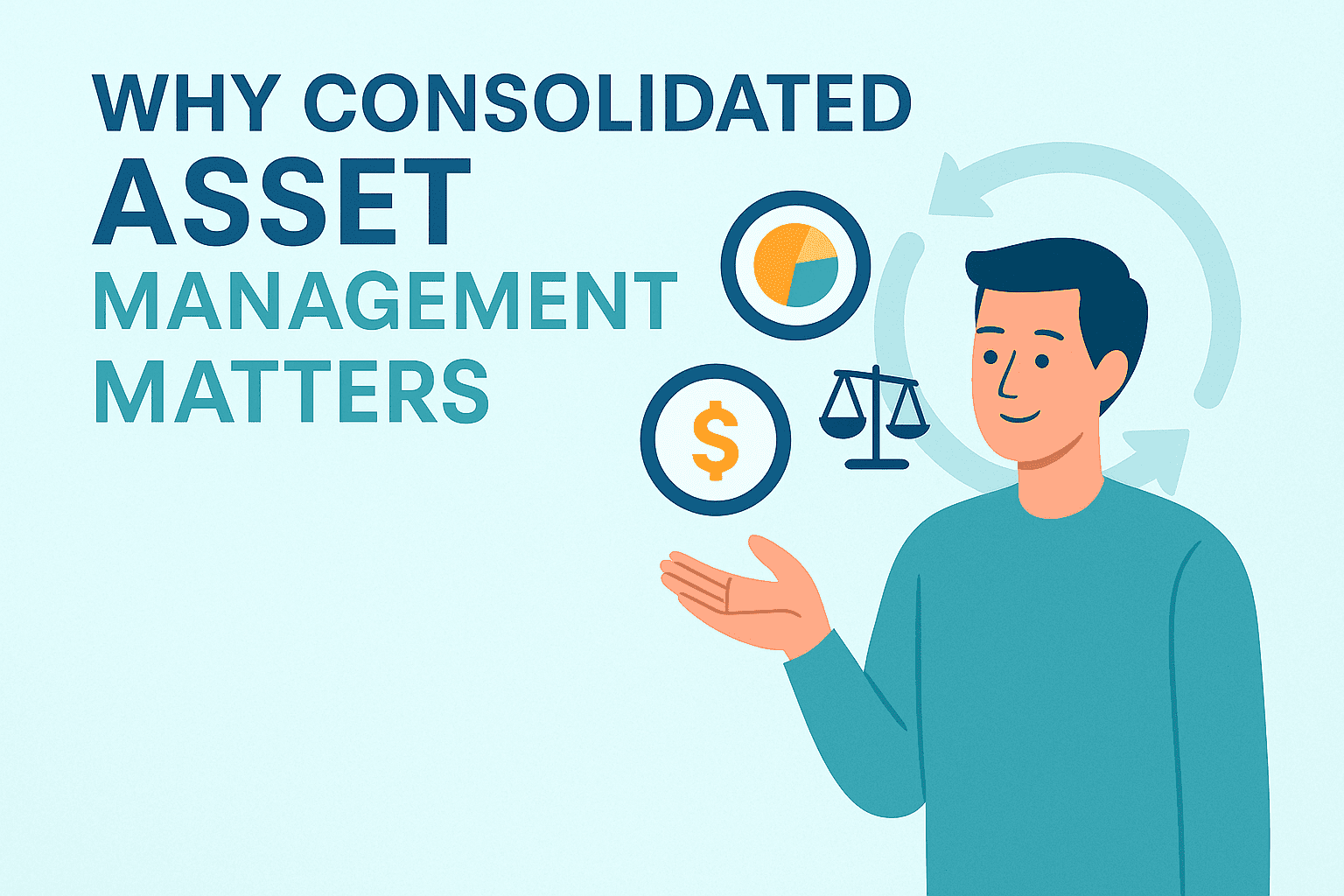In today’s fast-paced financial world, individuals often find themselves juggling multiple investments—mutual funds, equities, bonds, fixed deposits, and insurance policies, sometimes spread across different platforms, banks, or brokers. While diversification is essential for reducing risk, managing fragmented financial assets can be overwhelming. This is where consolidated asset management plays a crucial role.
The Challenges of Managing Fragmented Financial Assets
Scattered Information
Investors frequently face the problem of scattered investment details. A few mutual funds may be tracked on one app, equities with a broker, insurance policies in paper form, and FDs with a bank. This fragmentation makes it hard to get a complete view of one’s wealth.
Time-Consuming Tracking
Monitoring the performance of different investments often requires logging into multiple accounts, collecting statements, and manually recording data. This process is not only time-consuming but also prone to errors.
Difficulty in Assessing Portfolio Health
Without a consolidated view, it becomes challenging to assess asset allocation, risk exposure, or returns. For example, an investor might unknowingly invest too heavily in equities or miss diversifying into debt instruments.
Taxation Complexities
During tax season, fragmented assets can create confusion. Investors may struggle to calculate capital gains, identify applicable deductions, or compile accurate reports without a single consolidated source of information.
Missed Deadlines
Insurance premium due dates, SIP installments, and FD renewals can be easily overlooked when assets are spread across different channels. Missing these deadlines can result in penalties, policy lapses, or loss of returns.
Why Consolidated Asset Management is the Answer
1. A Single Dashboard View
Consolidated asset management provides a holistic view of all financial instruments in one place. With a unified dashboard, investors can quickly track total wealth, monitor performance, and spot underperforming assets.
2. Better Decision-Making
When all assets are visible at once, investors can make informed decisions. For instance, if equity exposure is too high, one can rebalance by allocating more funds into bonds or fixed deposits.
3. Simplified Tax Filing
Consolidation ensures that capital gain statements, dividend details, and other income records are easily available. This streamlines tax filing and minimizes the risk of missing important data.
4. Time and Effort Savings
By automating the collection of investment information, consolidated management tools save hours of manual tracking. This gives investors more time to focus on strategy rather than paperwork.
5. Enhanced Goal Tracking
Whether saving for retirement, a child’s education, or buying a house, consolidated management helps align investments with goals. By tracking progress in one place, investors stay on course with financial planning.
Fragmented investments may feel like small pieces of a puzzle—difficult to assemble without the right tools. Consolidated asset management brings all these pieces together, offering clarity, convenience, and control. It not only simplifies financial tracking but also empowers investors to make smarter, goal-oriented decisions.
In an era where time is precious and financial complexity is increasing, consolidated asset management is no longer just an option—it’s a necessity for building and safeguarding wealth effectively.

